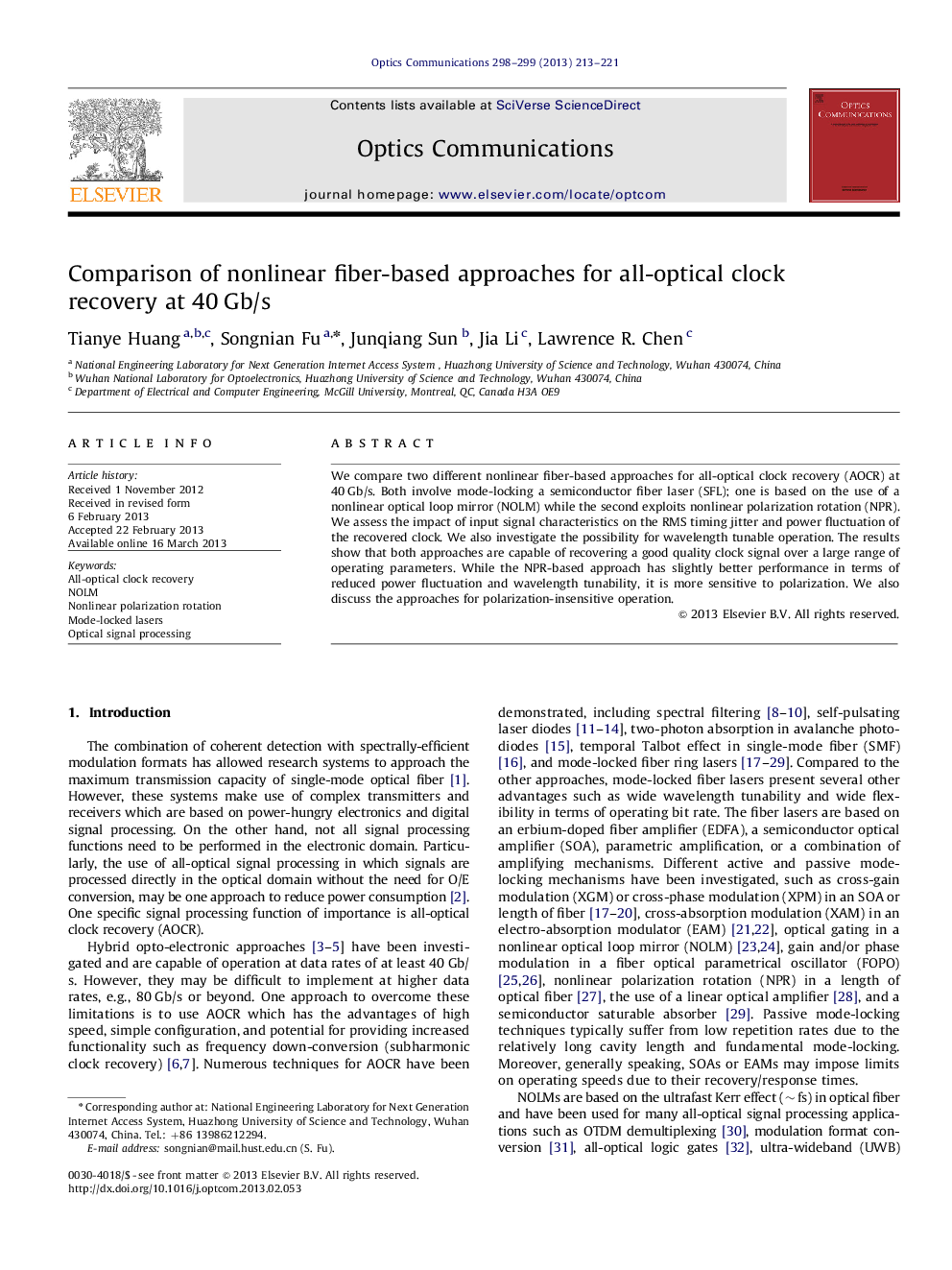| Article ID | Journal | Published Year | Pages | File Type |
|---|---|---|---|---|
| 1535389 | Optics Communications | 2013 | 9 Pages |
Abstract
We compare two different nonlinear fiber-based approaches for all-optical clock recovery (AOCR) at 40Â Gb/s. Both involve mode-locking a semiconductor fiber laser (SFL); one is based on the use of a nonlinear optical loop mirror (NOLM) while the second exploits nonlinear polarization rotation (NPR). We assess the impact of input signal characteristics on the RMS timing jitter and power fluctuation of the recovered clock. We also investigate the possibility for wavelength tunable operation. The results show that both approaches are capable of recovering a good quality clock signal over a large range of operating parameters. While the NPR-based approach has slightly better performance in terms of reduced power fluctuation and wavelength tunability, it is more sensitive to polarization. We also discuss the approaches for polarization-insensitive operation.
Related Topics
Physical Sciences and Engineering
Materials Science
Electronic, Optical and Magnetic Materials
Authors
Tianye Huang, Songnian Fu, Junqiang Sun, Jia Li, Lawrence R. Chen,
